I fell in love with an olive grove once. Not just with the olive grove of course, there was a lovely house standing in the grounds as well. In the olive grove there were 500 crooked olive trees. During the brief time the four brothers who owned the property contemplated whether to sell their property to me or not I dreamt a little. I pictured myself harvesting my olives with love and care and make olive oil. I would pour the finished oil into beautiful bottles and sell them. It was a beautiful dream.
In retrospect, it was probably a good thing that the brothers decided not to sell to me. After all I am a writer, not a farmer. The thought of olives and olive oil stayed with me and this week the MiMove-Blog takes a deep dive into the magical world of olive oil.
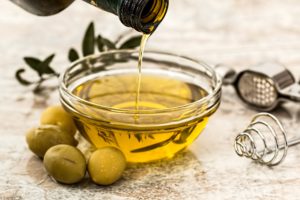
Olive oil and the Mediterranean diet
Although olive oil has been around for thousands of years there is a bit of a new hype going on. The Mediterranean diet has become the poster child for healthy eating and since olive oil is an essential part of the diet, the oil’s popularity is growing. There are many studies showing that olive oil is very healthy and perhaps especially for your heart.
Not only is the olive oil good for consumption, it may also make wonders for your skin and hair. Olives and olive oil is rich in vitamin E. And vitamin E is a real super vitamin for your skin and hair. Products made from olive oil tend to smell nice and be very soft and creamy, just like the oil. You may also use the oil as it is, as a deep hair conditioner or as a moisturiser for dry skin.
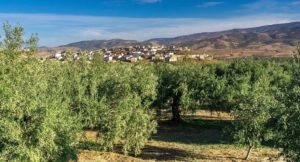
Originally, olive oil was produced in the area around Syria. Today, olive oil is produced in many places of the world, but the absolute majority of all olive trees grown are in the Mediterranean area.
Spain is a major producer of olive oil
Perhaps you think of Italy and Greece when you hear about olives and olive oil, but Spain is in fact the world’s largest producer of olive oil. About 40 per cent of all olive oil in the world is produced in Spain. Another interesting fact is that Italy imports more olive oil than they export.
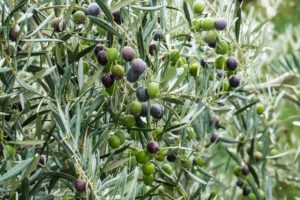
In Spain, there are more than 300 million olive trees. They produce between 600,000 and 1 million metric tons of olive oil per year. One million metric tons is the equivalent of about one billion litres of olive oil. Spains export only 20 per cent of their production. That means that on average, a Spaniard consumes about 17 litres of olive oil a year. In contrast, someone in Great Britain or the US will consume just one litre on average.
Olive oil – liquid gold
The areas around the city of Jaén in Andalusia is home to the world’s largest olive crop. Jaén is called the olive oil capital of the world due to the large amounts of oil produced there. The locals call the oil for liquid gold. In the area different kinds of olives are grown, Picual, Verdala, Real, and Manzanilla de Jaén.
Climate essential to olives
Olive oil is simply made by crushing and pressing the oil out of the olives. But before that is done there are a lot to tend to in the olive grove.
Olives ripe sometime between October and February. When that happens depends on the weather. Rain, draught, cold, heat, all affect the olives as well as the location of the trees. The weather influences the flavour of the olives and subsequently the oil greatly. The oils tend to get a milder flavour after a hot and dry summer.
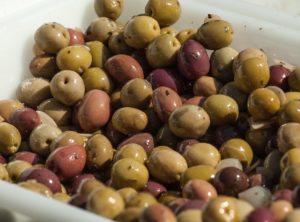
Olives are classified as a fruit and while they ripen their colour and texture shift. They go from being green and hard to dark purple or more black and soft. The ripeness influences both flavour and the amount of oil you can get out of the olives meaning timing is very important. An olive harvested earlier in the season gives the oil a fruitier flavour and a more ripe olive will give the oil a milder and rounder flavour.
Natural olives not so tasty
The olives you eat are prepared in different ways. An olive taken directly from the tree is quite bitter and not very tasty. Therefore, the olives are marinated or put into different oils to make them more palatable. The black olives sold in the supermarkets are unfortunately not often ripe olives. Instead of having to wait for the natural aging process to take place, the green olives are dyed black artificially. Some of the natural flavour disappears during that process giving them a blander taste.
Handle with care
It is a slow process, harvesting olives. Traditionally, you would use a small rake and carefully pick the olives manually off the branches. It is important to not harm neither the tree nor the olives. Today, it is however common practice to use a machine to shake the trees for the olives to drop.
Underneath the trees it is common to put down large nets to protect the olives and to collect them. Some even put softer material such as grass underneath the nets to make the landing softer for the olives. Should an olive get a small cut or tear, the oxidation process may begin and the fruit will ferment. That is something to avoid as it influences the flavour negatively.

The farmers are very careful with their trees and tend to them lovingly. The trees are to live for several generations and it is not until after the tree turns 50 years old that it starts to produce properly. One older tree may produce 30 – 50 kilos of olives per year. And it takes 5-10 kilos to make one litre of olive oil.
When the olives are harvested it is important to get them to the mills quickly. Firstly, all unwanted parts are taken away like leaves and twigs. Secondly the olives are washed and milled, both the fruit and the pit are pressed. About 4 per cent of the oil comes from the pit. The oil is then pressed, centrifuged and filtered. The oil is separated from water and the last solid particles are removed. Lastly, the oil is bottled.
Green like an olive
During the first 10 days of harvest the olives have reached their level of ripeness needed to extract oil from them. The oil is deep green in colour, and more viscous than oils made from riper olives. The colour of the young olives is typically referred to as Olive-Green.
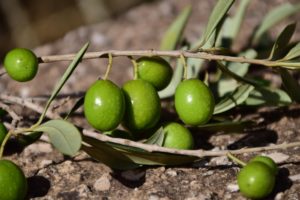
The finest oil is extra virgin
The highest quality is Extra Virgin Olive Oil. It is made purely from olives and without any chemical substances.The temperature during the process is not to exceed 27°C.
An oil that does not reach quite the same quality but is made with the same process is called Virgin olive oil. Other olive oils may be a blend of oils using additives or chemicals during the process.
The olive farmers are very proud of their traditions and methods. There are many festivals all around the country celebrating the olive and the olive farmers. There are also several museums where you can learn more about olives and olive oil. The International Olive Council keeps a list of all museums in the world dedicated to olives, also those in Spain. You can for example visit the museums in Córdoba, Jaén or in Malaga, to mention only a few.
I now know a little more of what is involved in making a litre of liquid gold. And I am happy the brothers didn’t want to sell their olive grove to me. I am quite content just buying a bottle in my nearest Supermercado. However, I will start reading the labels more carefully.







